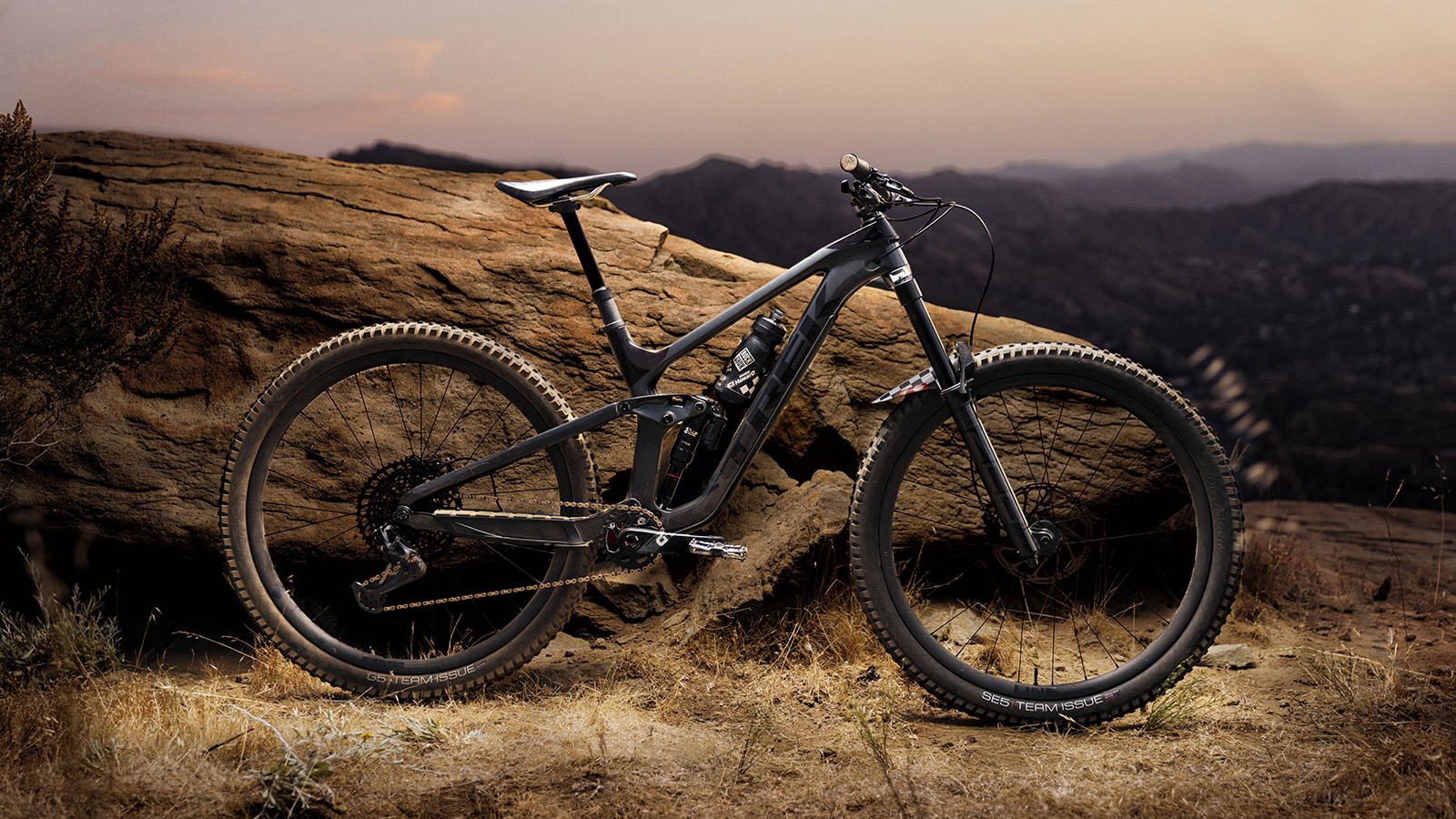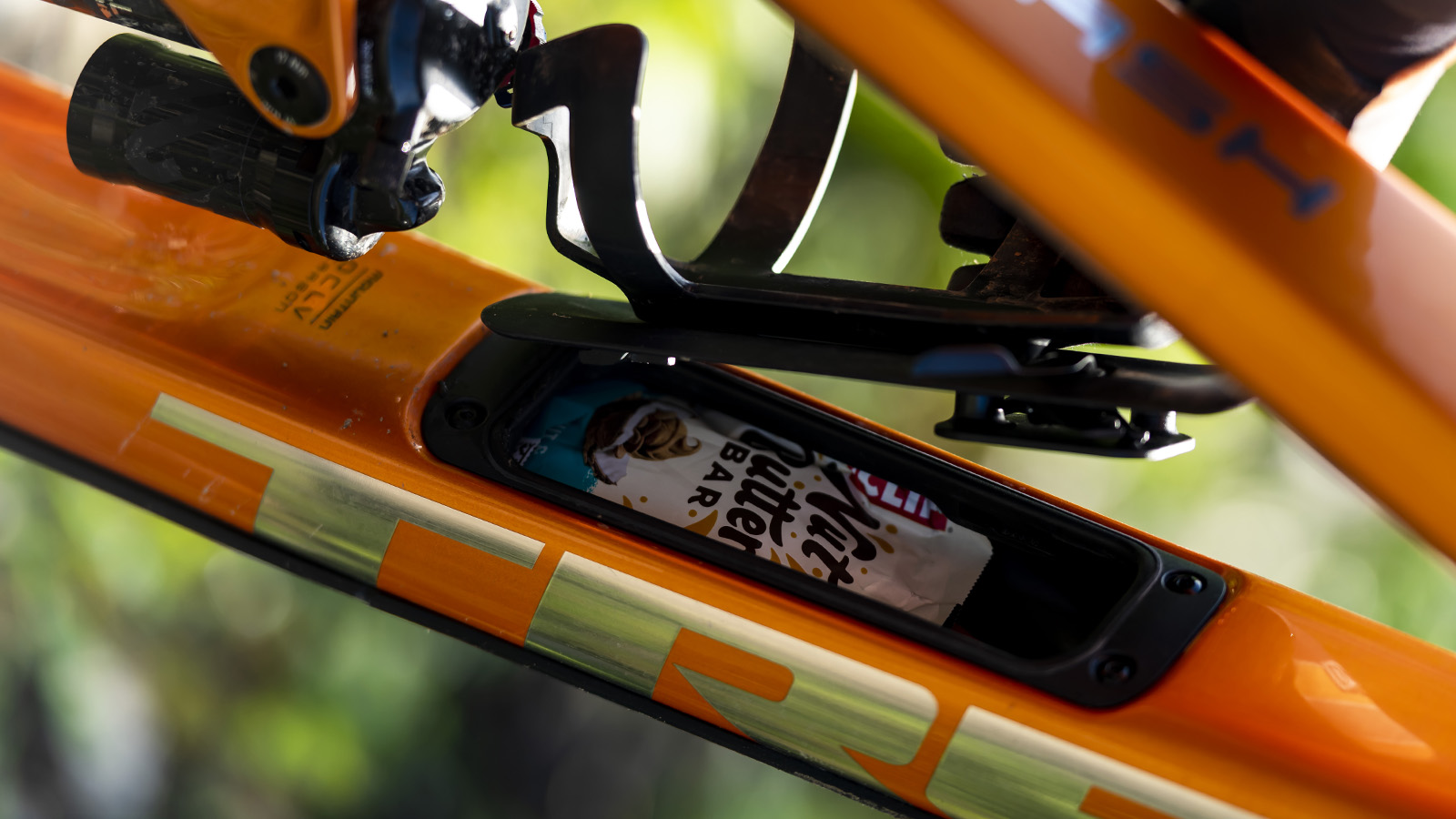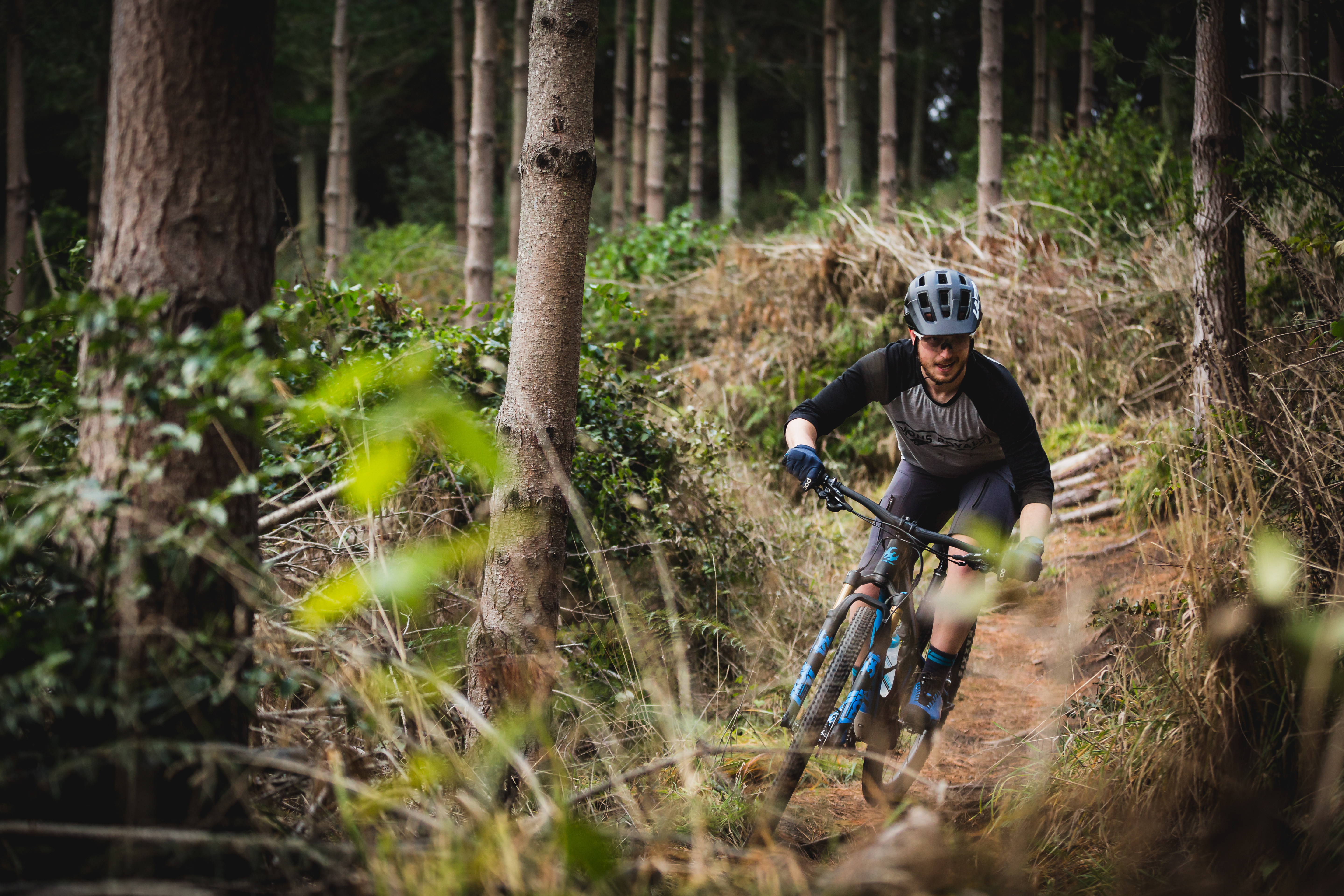Trek's new Slash 29er has more travel, in-frame storage and a revamped geometry
Trek brings its Slash 29er enduro bike up to date to make it more capable with longer, slacker geometry, better suspension and 10mm more travel

The Trek Remedy was one of the first 29er enduro and all-mountain bikes on the market and was piloted by Tracy Mosley to victory at the first-ever EWS. Everything from geometry to suspension has come a long way since then, the 29in wheel size has become the norm for enduro riding.
Trek’s current 29er enduro platform the Slash has just been revamped 2021 with more travel and new geometry.
There is no shortage of upgrades that have come to the new Slash, the most significant being that it is far from short; the reach has increased from 15mm up to 40mm depending on the size — the size M now measures 450mm, up from 425mm.
“What we’ve done is shifted the rider forward on the bike. So part of that is driven by steepening up the seat tube angle — the effective and the actual angle pretty significantly,” says Dylan Howes, Director of MTB Frame Technology at Trek. “That gets you over the pedals, gets your legs working more efficiently, especially climbing. We (also) pushed the front end further so that that seated to bar position stays the same, and the rider is still stretched out in a comfortable position.”

More squish front and rear
The new slash also sees a bump in suspension from 160mm to 170mm at the front and from 150mm to 160mm at the rear. Howes says this was the result of rider feedback, their team riders were running longer forks; which slackened the front end and added a bit of extra squish, but also sacrificed suspension efficiency or making the bike feel sluggish. So with the new bike, the team at Trek delivered what the riders had already been doing and tweaked the geo to prevent the negative characteristics.
The new slash sees a slackened head angle, now 64.1-degrees and the seat angle steepened to 66.5-degrees, which was again a rider request. Howes says it not only gets the wheel out further in front of the rider on those super steep descents, but it also extends the wheelbase and puts the rider more ‘in the bike’ for more confidence and stability with the trail gets spicy.
With the added travel and slacker geometry, the kinematics and main pivots had been slightly tweaked, however, the ABP (Active Braking Pivot) at the rear axle and the chainstay Mino Link flip-chip remain. Swapping the Mino Link from high to low slackens the head angle and seat angle half a degree and drops the BB by about six-millimeters.
To balance the additional length at the front end, the chainstays are also a hair longer at 437mm, leaving room for a 2.5in tire and keeping the rider centered between the wheels.
Trek opted to stick with the Boost 148 rear hub spacing, rather than going Superboost as others in the all-mountain and enduro category have done, employing the 55mm chainline crank options from SRAM and Shimano to allow for max tires and chainring clearance.

Thru-shaft goes Super Delux
For quite a few years, Trek has spec’d a custom RE:aktiv thru-shaft rear shock on full-suspension bikes across its range. Thrusaft is a custom damper assembly that attempts to eliminate damper lag by replacing the Internal Floating Piston with a solid column of oil, a single damper piston and a rod that exits the bottom of the shock during compression. According to Trek this simplified design makes for a faster response through repeated hits and does away with the harshness and hesitation some riders report.
The new Slash sees an exclusive custom-built RockShox Super Delux with the RE:aktiv thru-shaft design and a modified air can that holds a larger negative air spring volume, accept tokens to increase progressivity, while also increasing the tunability of the positive air spring. There is also a new set of bushings and seals purported to reduce stiction and friction
Because this particular Super Delux was built specifically for the new Slash, Rockshox was able to spin the dials off to the side so they are easy to get to, and tuned the three compression settings specifically for the bike.
At the front of the bike is an updated KnockBlock 2.0 system that opens the steering angle from 58-degrees to 72-degrees to help you navigate tight switchbacks at low speed while still protecting the frame and brake/shift lines in a crash. The stopper chip is also removable for those that would like to use a different stem, but not to worry, the fork crown will clear the downtube.

Speaking of the downtube, the rock strike armor now runs nearly the full length, and on the carbon models is removable for those who like to live dangerously in search of grams. Trek has also added its down tube storage across the entire range of Slashes —carbon and alloy—and there is room for a bottle cage and full-sized bottle inside the frame, so you can leave your backpack at home.
In the seat tube, you’ll find a new Bontrager Line Elite dropper (34.9mm diameter), which will be available from 100mm up to 200mm of travel. This post sees a new cartridge that uses what Bontrager calls MaxFlow technology, which the brand says allows for better oil flow for faster compression and return. With this new dropper post, Trek has also tweaked the updated Slash to allow for a longer dropper and will spec a 150mm on size medium and a 200mm on a size XL.
At the cranks, you’ll find a BSA 73 threaded BB (yay!) and Trek has employed SRAM’s universal derailleur hangar standard, so when you inevitably break one, it won’t take hours of research and phone calls to every bike shop in your state to find one.
For the 2021 model, the slash will be available as part of Trek’s Project One not only for parts but also for paint, including the new splatter fade patter.
The new starts at $3,499.99 for the Slash 7, and off the rack models top out at $8,499.99 Slash 9.9 XTR.

Born and bred in Colorado, and now based in Australia, Colin comes from a ski racing background and started riding as a way to stay fit through the summer months. His father, a former European pro, convinced him to join the Colorado State University collegiate cycling team, and he hasn't stopped since. It's not often he pins on a number nowadays, and you'll likely find him in search of flowy singletrack, gravel roads and hairpin corners. Colin has worked at Bikeradar and is a regular contributor to Australian Mountain Bike and Cyclist magazines.
Rides: BMC Team Machine SLR01, Trek Top Fuel 9, Ibis Ripley
